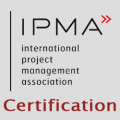
The International Project Management Association (IPMA) provides an excellent standard for measuring project success. It’s called the Project Excellence Model (PEM), and it establishes an analytical system of points for various categories. It is used in the selection of the IPMA Project Excellence Awards every year.
It is documented within the Project Excellence Baseline, available for purchase from the IPMA website.
The IPMA Project Excellence model is divided into three areas:
- People & Purpose
- Processes & Resources
- Project Results
People and Purpose (A)
The first area of the model deals with the people the project interacts with and the purpose of the project. It is broken down into 3 evaluation criteria:
- Leadership & Values
- Objectives & Strategy
- Project Team, Partners & Suppliers
Leadership & Values (A.1)
This criteria deals with creating a high trust, high inspiration project environment. Project managers are leaders. They anticipate the future, develop a vision for achieving project goals, and motivate the project team to get there. This criteria is divided into three components:
- Role models for excellence (A.1a)
Strong project managers are role models for integrity, social responsibility, ethical behaviour and project excellence philosophy. The UN Global Compact’s Ten Principles in the areas of human rights, labour, the environment and anti-corruption are guiding principles. - Care for project stakeholders (A.1b)
Strong project managers exercise concern for all project stakeholders, big and small, internal or external, powerful or weak. Some stakeholders are supportive and some are opposed to the project, thus, a balanced approach to stakeholders’ interests is necessary. - Orientation towards project objectives and adaptability to change (A.1c)
Strong project managers take responsibility for the project results. They listen to stakeholders and ensure sufficient communication to achieve stakeholder buy in. The create an environment that is resilient in the face of change.
Objectives & Strategy (A.2)
High performance projects are require a strong definition of project objectives and the strategies used to achieve them. Hence, this criteria is for determining the high level strategic direction of how to get to the finish line, and it involves three areas:
- Managing stakeholders’ needs, expectation and requirements (A.2a)
Stakeholders are a project’s lifeblood. They come in many different forms – some are in favor of the project and some are opposed, some are small and some are large, some have high influence and some have low. The project team, project sponsor, and key project participants are often considered stakeholders as well. It is important to identify all the stakeholders, including the little ones who can often trip up a project due to their presumed insignificance. - Development and realization of project objectives (A.2b)
Projects are normally defined by the key objectives, such as budget and schedule, quality criteria, and so forth. But most projects have more objectives than that. Smaller ones like satisfying a small stakeholder or positioning the company for future work. - Development and realization of project strategy (A.2c)
Project strategy must consider the internal and external factors which affect the project and determine a path to the finish line under these influences. The underlying business case and benefits to the parent organization must be paramount, because many projects focus so much on the end product that it ends up as an amazing product, but doesn’t get used or implemented.
Project Team, Partners & Suppliers (A.3)
High performance projects ensure that the project team is developed and motivated, and that achievements are rewarded. Likewise, suppliers and partners are integrated into the team and committed to the project.
- Identification and development of competences (A.3a)
Projects must identify the competences required for project success in all three domains: People, perspective, and practice. The individual competences of team members must be identified so they can be nurtured and developed. The project continually seeks opportunities to develop the project team - Recognition of achievements and empowerment (A.3b)
Strong projects recognize the achievements of team members, partners, and suppliers. This motivates the project team and helps realize their full potential. The project team is also encouraged to contribute where their strengths can assist in the realization of project objectives. - Collaboration and Communication (A.3c)
Excellent projects create a culture of mutual involvement, open communication and trust. They build high performance, integrated teams that encourage all team members to proactively communicate problems and assist each other in determining solutions.
Processes & Resources (B)
 Project management teams need to carefully choose the right project management processes and methodologies that are most applicable to each project. The processes need to ensure the right communication is taking place between stakeholders, and that sufficient planning is being conducted. Likewise, the project’s resources need to be planned, then procured and actively managed.
Project management teams need to carefully choose the right project management processes and methodologies that are most applicable to each project. The processes need to ensure the right communication is taking place between stakeholders, and that sufficient planning is being conducted. Likewise, the project’s resources need to be planned, then procured and actively managed.
There are two components in the Process & Resources category:
- Project Management Processes & Resources
- Management of Other Key Processes & Resources
Project Management Processes & Resources (B.1)
Projects must identify and implement appropriate project management processes, tools, and methodologies. The processes are used to plan and manage all project areas, for example,
- Integration
- Stakeholders
- Project scope
- Resources
- Time (schedule)
- Cost
- Risk
- Quality
- Procurement
- Communication
Strong projects involve their stakeholders early in the selection of these processes, and consult with the appropriate stakeholders in the use of the project’s resources. In particular, the parent organization must be consulted to align project management processes with their internal processes.
Throughout the project, the project management processes and monitored and assessed, and improvements are made if necessary.
Management of Other Key Processes & Resources (B.2)
This area deals with the technical, rather than project management, processes and resources. The engineering design, construction, safety, environment, and other specifications require processes that often need expert advice. Some projects have a very complex end product with many technical challenges, and others are more basic.
The technical processes must be monitored and evaluation regularly to ensure the acceptability of the end product.
Also, the project’s results need to integrate back into the parent organization, which may require consideration in selection of the technical processes.
Project Results (C)
 Although much effort is given toward measuring strong project management, a project cannot be considered excellent unless it achieves great results. Whatever the end product is, it must be high quality, delivered on time and budget, and any other relevant success criteria must be satisfied. But that is not enough either. It must not just achieve its goals, but be perceived to achieve its goals. That means the stakeholders must be satisfied with the result.
Although much effort is given toward measuring strong project management, a project cannot be considered excellent unless it achieves great results. Whatever the end product is, it must be high quality, delivered on time and budget, and any other relevant success criteria must be satisfied. But that is not enough either. It must not just achieve its goals, but be perceived to achieve its goals. That means the stakeholders must be satisfied with the result.
There are four components to the category of Project Results:
- Customer Satisfaction
- Project Team Satisfaction
- Other Stakeholder Satisfaction
- Project Results and Impact on the Environment
Customer Satisfaction (C.1)
The customer must be satisfied with the results produced by the project. Sometimes this is not a yes/no equation, for example a mostly satisfied customer is sufficient to call the project a success.
- Customer perception (C.1a)
Most of the time, satisfaction is expressed throughout the project life cycle in various ways. For example, verbal appreciation, survey results, and recommendations to other business units or companies. It is the customer perception that counts more than the actual results. For example, it is possible (although not likely) that sometimes the project’s results are low quality but the customer loves them. - Indicators of customer satisfaction (C.1b)
Excellent projects receive indicators of customer satisfaction, such as number of complaints, number of revisions, safety performance, etc. This also includes the realization of benefits, such as the actual revenue generated by the product, or rate of return on investment.
Project Team Satisfaction (C.2)
Likewise, the satisfaction of the project team is a factor in the judgment of project success. The project team must be satisfied with the outcome and happy that they worked on the project.
- Perception of the project team (C.2a)
Similar to the stakeholders, it is the perception, not the actual result, that is more important. The project team must perceive the benefits to their career and life of working on the project. - Indicators of project team satisfaction (C.2b)
Successful projects leave project teams that have observable indicators of their satisfaction with the result. The project team has greater prospects than when they joined the team, their career is advanced and their work/life balance is stronger. They develop a stronger appreciation of safety and the environment, and have greater potential for recognition and awards than when they started.
Other Stakeholder Satisfaction (C.3)
High performance projects achieve excellent stakeholder satisfaction. This satisfaction arises from the achievement of project results. The project must achieve its goals with all stakeholders satisfied, not just some of them.
- Perception of the other stakeholders (C.3a)
Obviously, the customer is the primary stakeholder. But the other, smaller ones are integral to the success of most projects. Many have a minor interest in the project but a major ability to derail it. Some start out opposed to the project. The perception of these stakeholders to the project success is an important indicator of project success. - Indicators of other stakeholders’ satisfaction (C.3b)
Written or verbal satisfaction from these stakeholders is a measurement of project success, as are agreements for future cooperation or strong references. Health, safety, or environmental concerns can be measured to determine if the project has achieved its objectives.
Project Results and Impact on Environment (C.4)
Excellent projects must leave a positive impact on the environment.
- Realisation of results as defined in project objectives (C.4a)
Excellent projects must realize the environmental results that they originally intended to achieve - Realisation of results beyond project objectives, including impact on environment (C.4b)
Excellent projects must create positive environmental results over and above their project objectives. This can be measured via awards, sector recognition, or directly via waste reduction, etc. - Project performance (C.4c)
The project performance measures such as cost, deadlines, and quality measures generally have an impact on the environment, and their achievement is a factor in project success.






